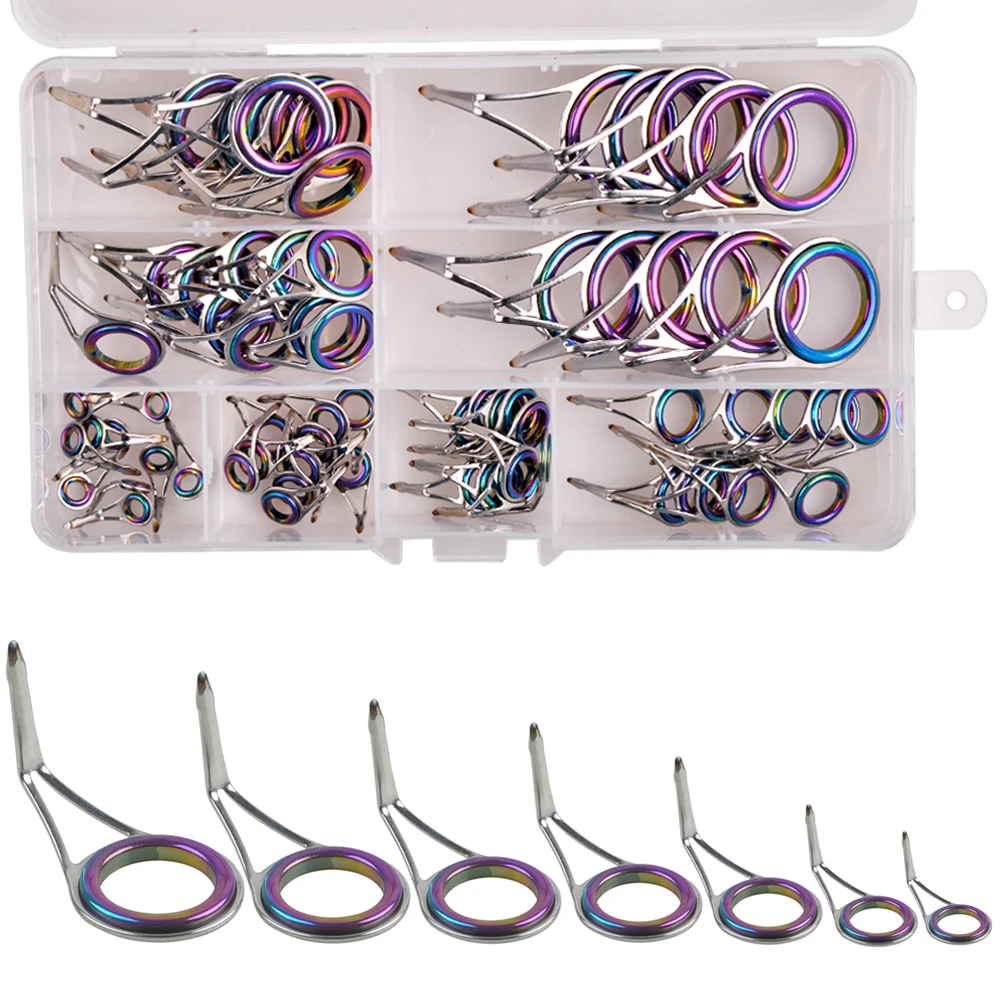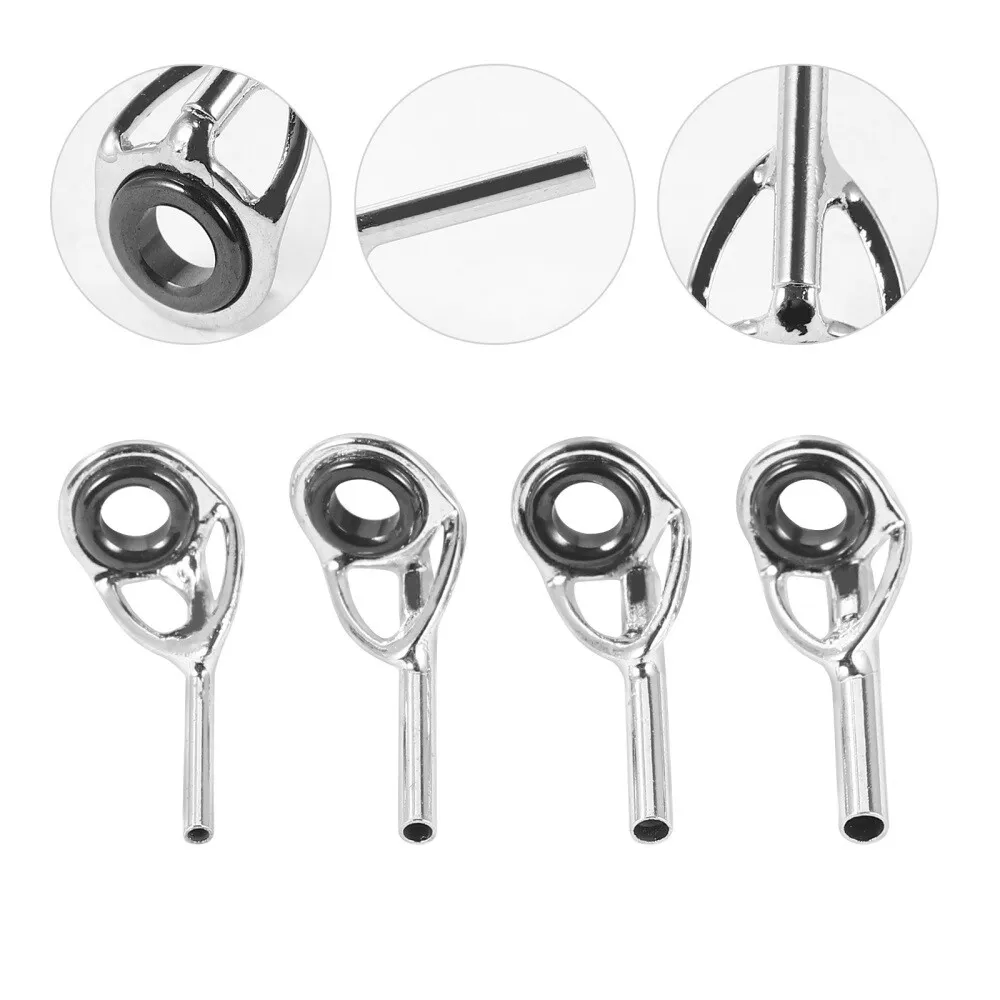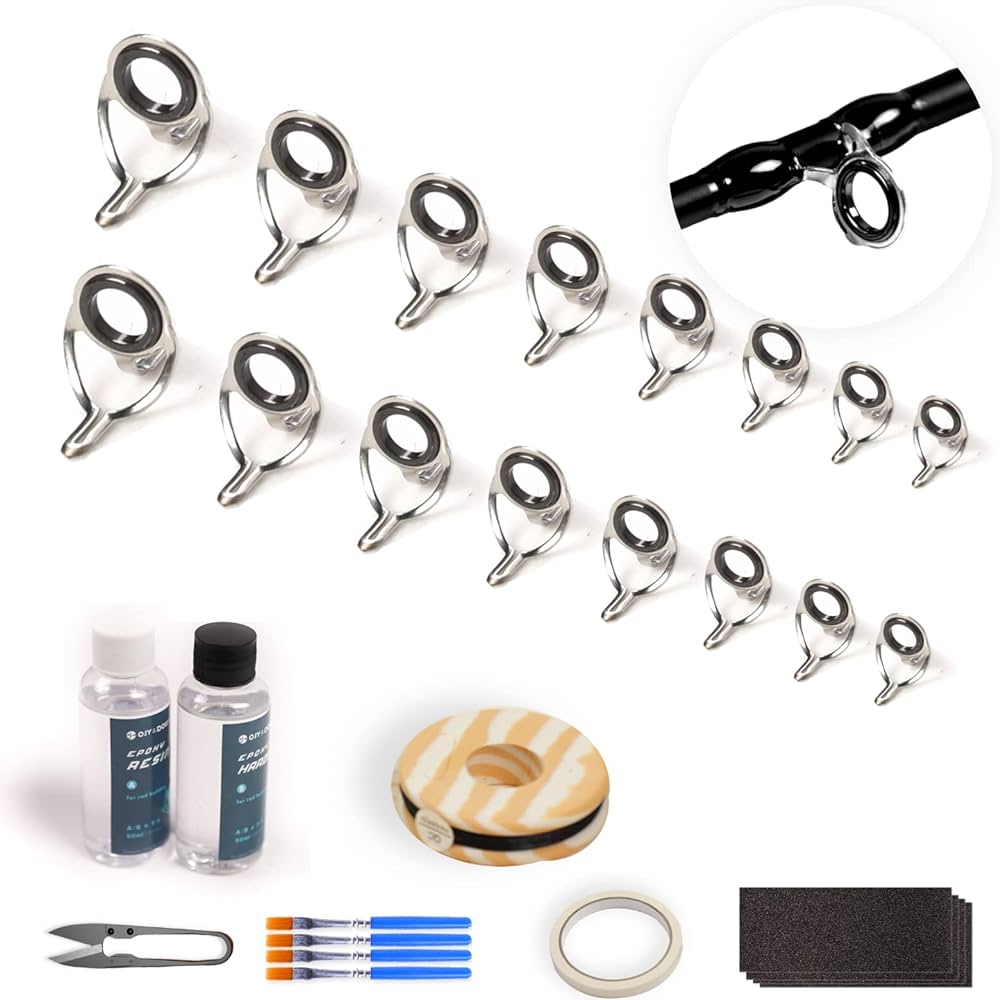Fishing rod eyelets, also known as guides, are crucial components of a fishing rod that impact its overall performance and functionality. Eyelets guide the fishing line from the reel to the rod tip, playing a significant role in casting accuracy, line control, and overall angling experience. Without quality eyelets, even the most advanced fishing rod can underperform. Therefore, understanding the types, materials, placement, and maintenance of fishing rod eyelets is essential for enhancing your fishing experience. This comprehensive guide explores the key aspects of fishing rod eyelets, from their functions and types to maintenance tips and customization options. By following these insights, you can ensure your fishing rod performs at its best.
Functions of Fishing Rod Eyelets
Fishing rod eyelets serve several essential functions that contribute to the angler’s success and comfort. Therefore, understanding these functions is crucial for optimizing your fishing experience.
Guiding the Line
The primary function of fishing rod eyelets is to guide the fishing line from the reel to the rod tip. This guidance ensures a smooth and controlled flow of the line during casting and retrieval. Properly aligned eyelets reduce friction and prevent tangling, allowing for more accurate and longer casts. The precise guiding function of eyelets enhances the overall efficiency of the fishing rod. Therefore, recognizing the importance of line guidance is essential for improving casting performance and achieving successful catches.
Distributing Pressure
Fishing rod eyelets play a vital role in distributing pressure along the rod blank during casting and fish retrieval. When a fish is hooked, the eyelets help distribute the force exerted by the fish’s movements, preventing the rod from bending excessively at one point. This even pressure distribution reduces the risk of rod breakage and ensures a balanced and controlled fight with the fish. Properly spaced and quality eyelets contribute to the rod’s durability and performance. Therefore, understanding the importance of pressure distribution enhances your fishing experience and equipment longevity.

Types of Fishing Rod Eyelets
Different types of fishing rod eyelets cater to various fishing styles and conditions. Therefore, exploring these types helps you choose the right eyelets for your needs.
Standard Guides
Standard guides are the most common type of fishing rod eyelets used in various fishing applications. They consist of a metal frame with a ceramic or hard metal insert. These inserts provide a smooth surface for the fishing line to glide through, reducing friction and wear. Standard guides are versatile and offer reliable performance for both freshwater and saltwater fishing. They come in various sizes to accommodate different line strengths and rod actions. Therefore, recognizing the utility of standard guides ensures a well-rounded and versatile fishing setup.
Micro Guides
Micro guides are smaller than standard guides and are designed to enhance casting distance and accuracy. These eyelets have a compact frame and a narrow insert, allowing for tighter and more precise line control. Micro guides reduce line slapping against the rod blank, resulting in smoother and quieter casts. They are particularly popular in techniques that require finesse and accuracy, such as bass fishing. While they may not be suitable for heavy-duty applications, micro guides offer significant benefits for specific fishing styles. Therefore, understanding the advantages of micro guides helps you tailor your fishing rod to specific needs.
Materials Used in Fishing Rod Eyelets
The materials used in fishing rod eyelets significantly impact their performance and durability. Therefore, understanding these materials helps you choose the right eyelets for your fishing rod.
Ceramic Inserts
Ceramic inserts are commonly used in fishing rod eyelets due to their smoothness and durability. These inserts provide a low-friction surface that minimizes line wear and enhances casting distance. Ceramics are resistant to corrosion and heat, making them ideal for both freshwater and saltwater applications. However, ceramic inserts can be brittle and may chip or crack under extreme stress. Despite this, their performance benefits make them a popular choice among anglers. Therefore, recognizing the importance of ceramic inserts ensures a better fishing experience with reduced line wear.
Titanium Frames
Titanium frames are favored for their strength, lightweight properties, and resistance to corrosion. These frames contribute to the overall balance and sensitivity of the fishing rod, enhancing the angler’s ability to detect subtle bites. Titanium eyelets are also highly durable and can withstand harsh fishing conditions without compromising performance. While they may be more expensive than other materials, their longevity and performance benefits justify the investment. Therefore, understanding the advantages of titanium frames ensures a durable and high-performing fishing rod.

Placement and Alignment of Eyelets
The placement and alignment of fishing rod eyelets are critical factors that influence rod performance and casting efficiency. Therefore, understanding these aspects is essential for optimizing your fishing experience.
Eyelet Spacing
Eyelet spacing refers to the distance between individual guides on the fishing rod blank. Proper spacing ensures even distribution of line tension and pressure during casting and fish retrieval. The first guide, also known as the stripper guide, is typically placed closest to the reel to minimize line slap. Subsequent guides are spaced based on the rod’s action and length, with closer spacing near the rod tip for better control. Correct eyelet spacing enhances the rod’s overall performance and casting efficiency. Therefore, recognizing the importance of eyelet spacing ensures a balanced and efficient fishing rod.
Guide Alignment
Guide alignment refers to the straight and precise positioning of eyelets along the rod blank. Misaligned guides can cause the fishing line to rub against the rod, increasing friction and reducing casting distance. Proper alignment ensures a smooth and uninterrupted line flow during casting and retrieval. Using a rod building jig or alignment tool can help achieve accurate guide placement. Regularly inspecting and adjusting guide alignment maintains the rod’s performance and prevents potential issues. Therefore, understanding the significance of guide alignment enhances your fishing rod’s effectiveness and longevity.
Maintenance and Care of Fishing Rod Eyelets
Proper maintenance and care of fishing rod eyelet ensures their longevity and optimal performance. Therefore, exploring these maintenance tips is essential for extending the life of your fishing rod.
Regular Cleaning
Regular cleaning of fishing rod eyelets is crucial for removing dirt, debris, and salt buildup. Use a soft brush or cloth to gently clean the eyelets, paying particular attention to the inserts and frames. Rinse with fresh water after each use, especially after saltwater fishing, to prevent corrosion. Applying a light coat of reel oil or lubricant can keep the eyelets smooth and functioning properly. Regular cleaning prevents buildup that can affect line flow and rod performance. Therefore, recognizing the importance of regular cleaning maintains the eyelets’ condition and efficiency.
Inspecting for Damage
Inspecting fishing rod eyelets for damage is essential to ensure they function correctly and prevent line wear. Look for signs of cracks, chips, or corrosion on the inserts and frames. Damaged eyelets can be replaced to avoid compromising the rod’s performance. Using a magnifying glass can help identify small defects that may not be immediately visible. Regular inspections allow for timely repairs and prevent minor issues from escalating. Therefore, understanding how to inspect for damage ensures your fishing rod remains in optimal condition.

Customizing Fishing Rod Eyelets
Customizing fishing rod eyelets can enhance performance and suit specific fishing styles. Therefore, exploring customization options offers valuable insights for tailored fishing experiences.
Upgrading Eyelets
Upgrading eyelets involves replacing standard guides with higher-quality or specialized ones. This customization can improve casting distance, line control, and overall rod performance. For example, upgrading to micro guides can enhance accuracy, while titanium-framed eyelets can increase durability and reduce weight. Consultation with a rod builder or fishing expert can help identify the best upgrades for your specific needs. Upgrading eyelets provides a personalized touch and enhances the fishing experience. Therefore, recognizing the benefits of upgrading eyelets ensures a high-performing and customized fishing rod.
DIY Replacements
DIY replacements allow anglers to replace damaged or worn-out eyelets on their own. This process involves removing the old guides, selecting new ones, and securing them with thread wraps and epoxy. Rod building kits are available with all the necessary tools and materials for DIY replacements. Detailed guides and tutorials can assist in the process, making it accessible for beginners. DIY replacements offer a cost-effective solution and allow for customization based on personal preferences. Therefore, understanding how to perform DIY replacements empowers anglers to maintain and enhance their fishing rods.
Conclusion
Understanding fishing rod eyelets involves exploring their functions, types, materials, placement, and maintenance. Proper knowledge of these aspects ensures optimal performance and longevity of your fishing rod.
Exploring elements like guiding the line, distributing pressure, and the advantages of ceramic inserts and titanium frames provides valuable insights. Recognizing the importance of eyelet spacing, guide alignment, and regular cleaning further enhances your understanding.
By engaging with tips on inspecting for damage, upgrading eyelets, and DIY replacements, you can maintain and customize your fishing rod effectively. Therefore, whether you are an experienced angler or new to the sport, understanding these techniques offers practical and valuable insights. Embrace the opportunity to optimize your fishing rod, knowing you have the knowledge and resources to ensure peak performance and enjoyment!


















